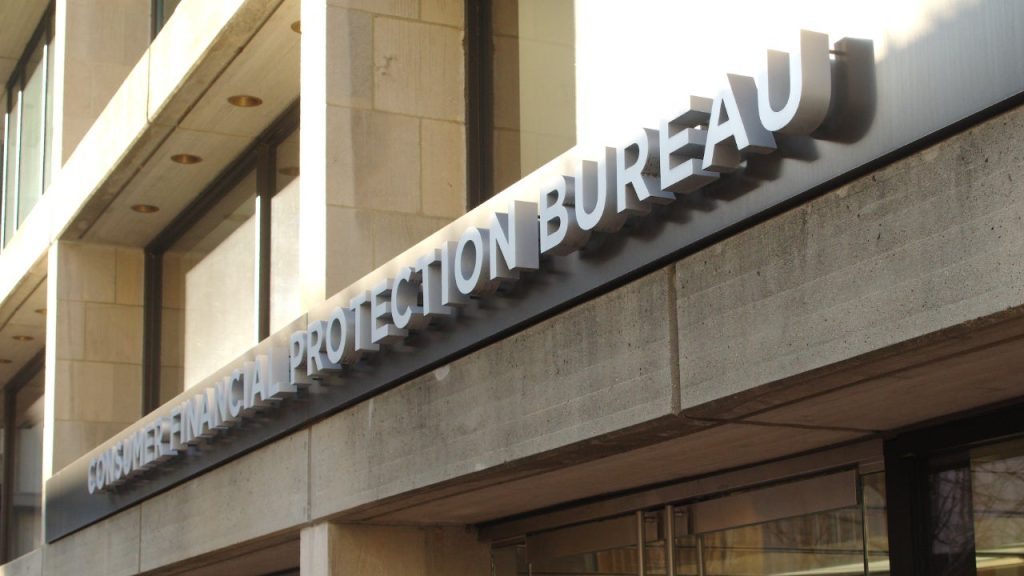Key takeaways
- Ongoing rollbacks at the CFPB may lead to some deregulation in consumer lending, but it’s unlikely to reach pre-2010 conditions.
- Consumers could see the return of inflated interest rates, forced arbitration clauses and more expensive fees moving forward.
- Facing fewer consequences, some lenders may revert to aggressive tactics such as yo-yo financing, hidden fees and undisclosed add-ons to inflate loan costs.
- Consumers will have less recourse against dishonest or deceptive lenders.
- Careful borrowers should request documentation and review their terms carefully before signing any loan agreements.
Since 2010, the Consumer Finance Protection Bureau (CFPB) has regulated major banking institutions in the United States. President Trump has been clear that he wants to curtail the bureau, which he began doing in February 2025 by suspending operations and reducing staff. The outcome of his ongoing changes to the CFPB will likely reduce regulations and consumer protections.
What is the CFPB?
The CFPB oversees financial institutions and their interactions with consumers. It was created to hold institutions accountable at a federal level and ensure fair, transparent and responsible practices in banking and lending. Since its inception, the CFPB has issued a number of enforcement actions, resulting in billions of dollars being returned to consumers. It has written and enforced rules around disclosures, hidden fees and discriminatory lending.
The CFPB’s database of consumer complaints has served as a way for Americans to raise issues and pressure institutions to resolve their concerns. It also publishes research and educational resources to help consumers make more informed choices about financial products.
The Trump administration plans to shrink the CFPB
Under the Trump administration, the CFPB is undergoing significant changes that reduce its role in consumer protection. The new administration has cut the bureau’s budget by approximately 46 percent and its staff by nearly 90 percent.
As a result of these changes, the agency has dropped several enforcement actions, including cases against several major banks concerning fraud protection failures. Some areas of oversight have been deprioritized, including student loans, medical debt and non-bank financial institutions (NBFIs).
In recent years, the CFPB has been expanding its authority over non-traditional financial institutions like student loan servicers, mortgage companies, payday lenders, payment processors and emerging fintech services like buy now, pay later (BNPL) loans. The Trump administration sees this expansion as the CFPB overstepping its mandate and claims the bureau has imposed unnecessary regulations on financial institutions, but experts disagree on the potential consequences of a CFPB shutdown.
Major banking institutions are unlikely to make dramatic changes
President Trump’s aggressive restructuring of the CFPB has some Americans fearing the worst for consumer rights. But how likely is it that we’ll see a return to pre-2010 behaviors?
Robert Brosh, Director of Compliance at Ncontracts, thinks it’s unlikely. Larger, traditional financial institutions have already taken steps to implement changes since the CFPB’s inception. Staff are trained with consumer rights in mind, and policies and controls are in place to protect consumers. “[Changing] that takes money, a lot of it, especially depending on the size of the institution,” he explains.
Change also means added risk. The U.S. political situation could change as soon as 2027’s midterm elections.
“What happens if a progressive takes office next time with executive authority having been put on steroids?” asks Mark Hamrick, Senior Director at Bankrate’s parent company, Red Ventures. “A wild, whipsaw effect isn’t conducive to serving the common good. It also makes it more difficult for businesses and consumers to plan.”
The CFPB is also not the only agency overseeing financial institutions. It supervises around 200 of the biggest banks and credit unions — those that hold the majority of banking assets in the U.S. economy. But as Brosh points out, there are more than 8,000 federally insured banks and credit unions across the country which are overseen by multiple federal offices. These include the Office of the Comptroller of the Currency (OCC), the Federal Reserve, the Federal Deposit Insurance Corporation (FDIC) and the National Credit Union Administration (NCUA). While the CFPB has dramatically shaped consumer protections, it is only one of many layers of protection for consumer finance.
Rollbacks may not be a huge win for financial institutions
Part of the argument for reducing the CFPB is that regulations constrain businesses, but to an extent, regulations can also level the playing field between businesses in an important way.
“Traditional financial institutions like [regulations] because they create parity in the industry, making sure that competitors aren’t taking advantage of the looser areas of regulation and enforcement,” Brosh says. In fact, it can help a company stand out if they have strong financials, solid risk management and a reputation for fair lending.
So while big banks might welcome loosening regulations in areas like fee caps, other regulations can help them compete at a lower cost and with less risk.
I think a lot of financial institutions would not support big changes. [Change] could have a short-term impact on potential savings, but a long-term impact on competition and consumers.
— Robert Brosh, Director of Compliance at Ncontracts
State regulators may protect consumers instead
Another layer of protection between consumers and financial institutions is state regulators.
“Given the politically polarized nature of our times, not all consumers across the nation can expect the same level of scrutiny and actions on their behalf,” Hamrick says.
State attorneys general and financial regulators have the power to file lawsuits and create legislation to control how institutions operate within their jurisdictions. However, their willingness — and ability — to do this varies by state and politics.
State attorneys general and financial regulators can be expected to continue to play active roles in enforcement, particularly where the politics is supportive of prioritizing the interests of consumers.
— Mark Hamrick, Senior director at Red Ventures
It’s likely that a spotty web of protections will emerge with greater consumer protections in states where consumers demand them and weaker protections in states that do not. Historically, blue states have tended to favor more regulation while red states have favored less.
What CFPB changes mean for consumer lending
President Trump’s changes to the CFPB will likely lead to a more aggressive lending environment. With the CFPB gutted, lenders may revive less consumer-friendly tactics, such as:
- Auto loans with yo-yo financing.
- Forced arbitration.
- Undisclosed add-ons like GAP insurance for cars or paid credit monitoring with personal loans.
- Higher late payment, prepayment and origination fees.
Without the weight of the CFPB, consumers may also struggle to hold lenders accountable and do so at higher personal cost. Consumers will likely find it more difficult to report, prove or even recognize violations. Those who wish to pursue their complaints will largely be forced to rely on private lawsuits, smaller agencies or state governments that can’t affect financial institutions on a national level.
It isn’t going to be the Wild, Wild West, but there is one less cop on the beat. Will there be a tendency to push the envelope and bend the rules? The skeptic in me assumes we will certainly see that. But to what extent, we don’t know, and only time will tell.
— Greg McBride, Chief financial analyst at Bankrate
Nontraditional financial institutions may pose the greatest risk
“Corners of the financial marketplace that are not subject to the same type of regulation [as banks] — fintechs, shadow banking, crypto exchanges — are where there needs to be an active watchdog,” says Greg McBride, Bankrate’s Chief Financial Analyst.
The riskiest area for consumers is likely to be in fintechs and NBFIs. Without the CFPB establishing new regulations or enforcing current regulations, these non-bank institutions may exploit gaps in our laws to gain a competitive advantage against larger, more established financial institutions.
Low-income and subprime borrowers will be most affected
With less clarity around regulations, traditional lenders may become more cautious when lending to low-income and subprime borrowers. They will have to consider new compliance risks in addition to the risk of borrowers defaulting, which may result in more denials.
At the same time, payday and other predatory lenders could feel emboldened to exploit gray areas of regulation. Hamrick points out that low-income and subprime borrowers are most at risk of higher-cost, higher-risk financial products, predatory lending and abusive debt collection.
“The CFPB provided a layer of protection against these practices and collected reports of complaints as a basis upon which to act, serving as a disincentive for those who might otherwise misbehave, or worse,” he warns.
Bottom line
While ongoing CFPB rollbacks are not a reason to panic, borrowers should be extra cautious about borrowing in this new environment. Seasoned borrowers should expect to see changes in familiar products and services, particularly around fees and arbitration agreements. New borrowers and those with weaker credit scores should set aside extra time for researching and evaluating personal loans or any other type of lending product, including auto loans, credit cards and mortgages.
Those who are particularly concerned may prefer to stick with traditional lenders rather than selecting non-traditional lenders. All lenders should protect themselves by reviewing any loan documents carefully and keeping them until they receive confirmation of payoff from their lender.
Why we ask for feedback
Your feedback helps us improve our content and services. It takes less than a minute to
complete.
Your responses are anonymous and will only be used for improving our website.
Help us improve our content
Read the full article here












